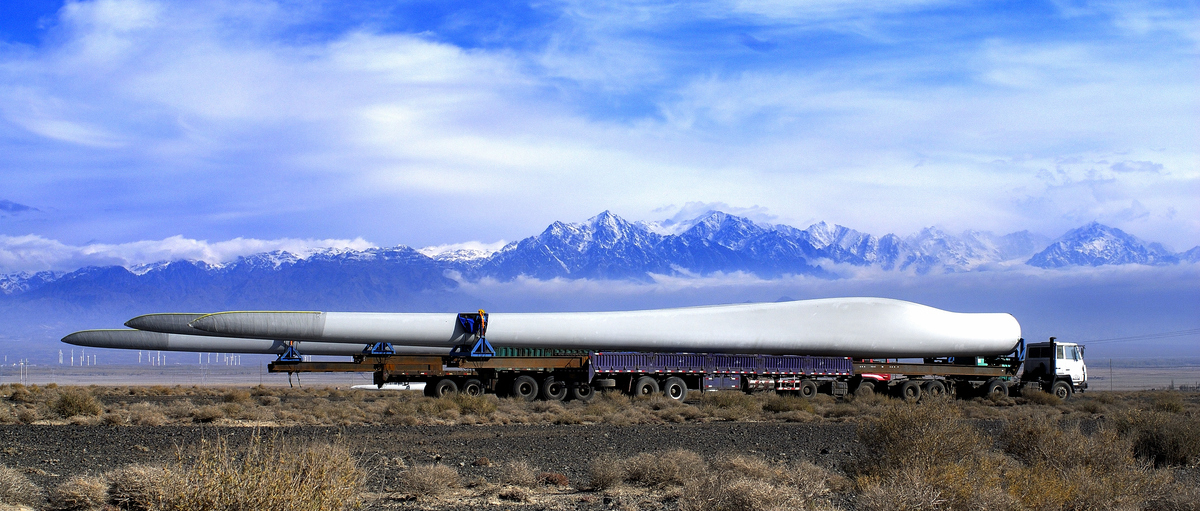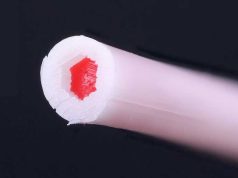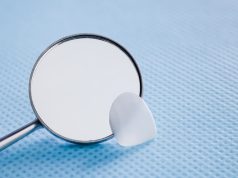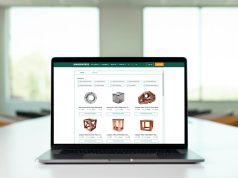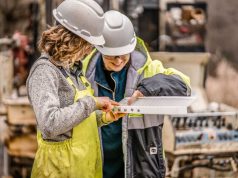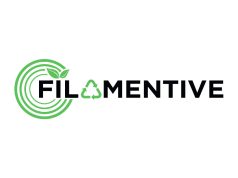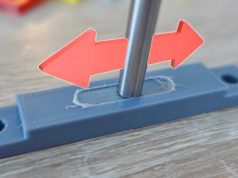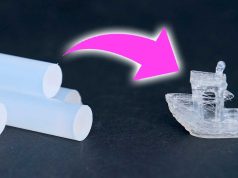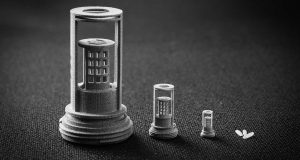At Goldwind headquarters, China’s first renewable energy carbon neutral business park, a set of flower beds have been built using 3D printing technology, printed from recycled solid waste. The application of this cutting-edge technology has injected more green power into the park while forging a new path for the solid waste recycling.
Different from traditional 3D printing materials, the materials used in the flower beds come from retired turbine blades from a wind farm in Inner Mongolia. With the help of 3D printing robots, the materials containing crushed blade particles can be pre-formed, promising a solid waste recycling rate of over 30%.
Retired turbine blade recycling
Essentially, 3D printing is a kind of additive manufacturing process, where designers input digital design models into 3D printers and convert them into printing instructions. After that, the printer follows the instructions and processes layers of materials into parts of specific shapes.
The technical difficulty of adding the crushed blade particles into the printing materials lies in maximizing the ratio of blade solid waste while ensuring a specific strength for the printed product.
During the experiments into blade solid waste-based 3D printing, the researchers repeated a number of experiments and demonstrations, constantly adjusting the ratio of various raw materials, as well as the particle size and gradation of the crushed blade particles. They finally landed on a golden ratio that met the strength requirements of the printed products while consuming blade solid wastes, resulting in a series of material systems suitable for 3D printing.
The mechanical properties, durability and working performance of the finished product made from this new printing materials are equal to that of conventional building concrete.
Garbage is simply resources handled improperly
Blade solid waste-based 3D printing is a breakthrough in terms of solid waste-based 3D printing and blade recycling. Data estimates show that China’s retired turbine blades will generate 5,800 tons of composite solid waste by 2025, and 74,000 tons by 2028. The solid waste from wind turbines remains a long-lasting problem for many companies in the industry.
As a smart, environmentally-friendly and efficient construction method, solid waste-based 3D printing, when compared with traditional construction technologies, features no mold, lower labor costs, more efficient consumption of materials, increased freedom of design, greater construction efficiency, and a lower risk of personnel security, especially in the construction of uniquely shaped structures.
On the other hand, as wind power projects are mostly scattered throughout China’s most remote areas, the cost of transporting recyclable materials to various locations accounts for a large part of recycling costs. Another advantage of solid waste-based 3D printing is that it enables integration into other construction projects around the wind farm thanks to its applicability. With the help of mobile 3D printing robots, blade solid waste can be used for local production and consumption, thus lowering long-distance transportation costs.
“Garbage is simply resources handled improperly. The original intention behind our decision to develop such technology was to change our position as a blade solid waste producer into a raw material supplier for solid waste-based 3D printing, making use of the vast construction market to enable more consumption of materials after blade recycling and giving full play to the decisive role of the market in resource allocation, so that environmental protection can be more valuable,” said the person in charge of the project.
“Our ultimate vision is to drive the development of China’s green industry with innovative green technologies and to create a complete industrial chain for blade solid waste that is characterized by local recycling, local crushing, material screening, solid waste-based 3D printing, and product manufacturing,” stressed the person in charge of the project again.
In China Wind Power 2021, Goldwind released a white paper titled, Goldwind towards Carbon Neutrality: Action and Vision, pointing out that “by 2040, the recycling ratio of Goldwind products will reach 100%.” The application of blade solid waste-based 3D printing is a crucial step in such a program.
By continuing to invest in wind power recycling, Goldwind will explore more innovative low-carbon technologies and the systematic application of solutions to accelerate a carbon-neutral ecosystem, thus promising a zero-carbon, renewable future.
For more information, please visit www.goldwind.com/en/.
Subscribe to our Newsletter
3DPResso is a weekly newsletter that links to the most exciting global stories from the 3D printing and additive manufacturing industry.



